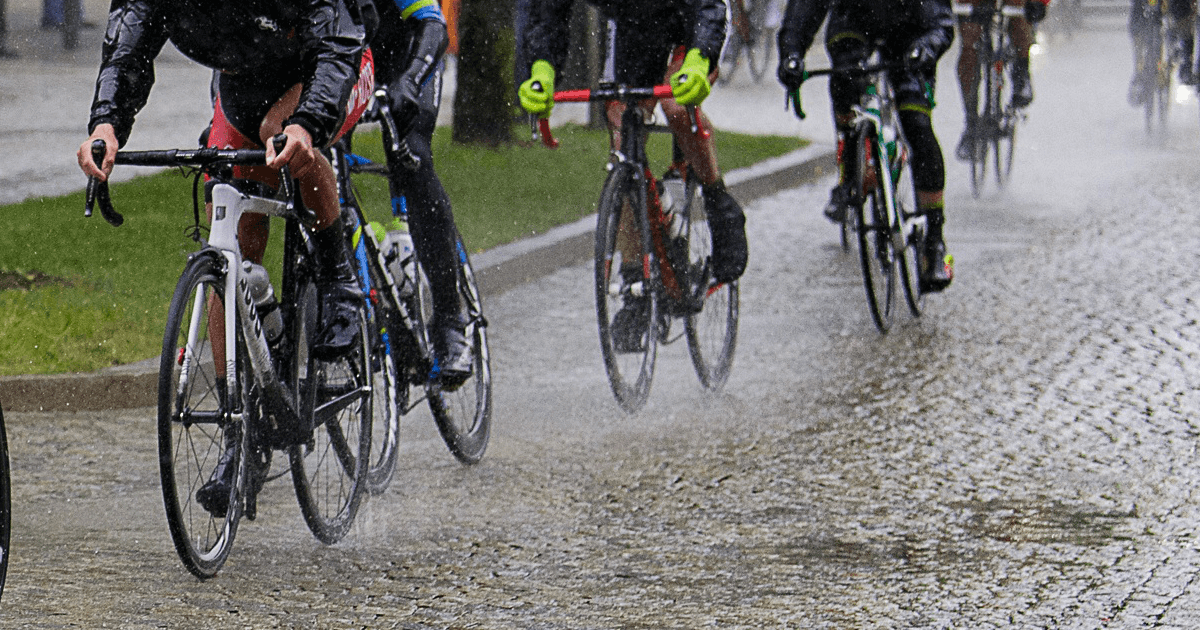Wear
Protecting Your Body: Waterproof Cycling Jacket
The biggest problem during rainy rides is getting your exposed body wet and cold. If you plan to ride in the rain, a waterproof cycling jacket is essential.
However, choosing a waterproof cycling jacket can be surprisingly tricky, as you often face the dilemma of “increasing waterproofing makes it stuffy inside” while “increasing breathability reduces waterproof performance.” The solution to this problem is a waterproof cycling jacket made with GORE-TEX.
GORE-TEX is a material used in mountaineering wear and even space suits, and it uniquely combines both “waterproof/windproof” and “breathability” properties. With ordinary materials, increasing waterproofing and windproofing to protect the body from the outside also prevents moisture from escaping from the inside. GORE-TEX, thanks to its unique technology, effectively blocks water from the outside while allowing moisture generated by sweat inside the clothing to escape.
The downside of GORE-TEX cycling jackets is their high price, but their performance is so impressive that many say, “Once you use it, you can’t go back.” It’s a garment worth its price.
Preventing Sweat Chill: Base Layer
On rainy days, you tend to cover your body with more clothing than usual, making it easier to sweat. Especially on a bicycle, since you’re exercising, you can’t completely prevent sweating no matter how breathable your clothing is. The problem with sweating is sweat chill. In cold weather, sweat chill can directly lead to catching a cold, so caution is needed.
To prevent sweat chill during rides, it’s best to use a base layer with excellent quick-drying and moisture-wicking properties. From the perspective of sweat chill, a high-performance base layer is considered just as important as a waterproof cycling jacket. Even if it costs a bit more, it’s best to think of it as an “investment in protecting your body” and choose a functional base layer.
Protecting Your Extremities: Waterproof Gloves & Shoe Covers
When cycling, your hands and feet are constantly exposed to wind and rain, but they don’t move much, so they tend to get cold. Cold hands and feet lower your perceived body temperature, so be sure to protect them with waterproof gear.
For rainy rides, not only should you use highly waterproof gloves, but also waterproof shoe covers worn over your shoes to prevent your feet from getting cold.
Ensuring Clear Vision: Eyewear / Shield
During rainy rides, cyclists inevitably face into the rain, which means rain can get into their eyes. With already reduced visibility, getting rain in your eyes can make it impossible to see ahead. Poor visibility is directly linked to accidents, making it extremely dangerous.
To address this on rainy days, use water-repellent eyewear or attach a shield to your helmet to protect your eyes and maintain clear vision.
Waterproof Cap
Most bicycle helmets have ventilation holes to help manage sweat on your head. While this feature enhances comfort during regular use, on rainy days, it allows rain to pour in endlessly.
To prevent rain from entering through the helmet’s ventilation holes, use a highly waterproof cap. However, be aware that highly waterproof caps can make your head sweaty and stuffy, so you might end up getting wet from sweat anyway.
Accessories
Increasing Visibility: Lights
On rainy days, not only you but also cars sharing the road have reduced visibility. Especially when car mirrors get wet, it becomes even harder for drivers to notice cyclists.
To increase your visibility to cars, be sure to equip a high-lumen front light and a tail light to alert vehicles behind you to your presence. Even during the daytime on rainy days, it’s important to keep your lights on so others can recognize you.
High-Grip Tires
Wet roads on rainy days make tires more prone to slipping. Since slipping can directly lead to accidents, equip your bike with high-grip tires that help prevent it. For better grip, using slightly wider tires is also a good option.
If you want to improve grip with your current tires, try lowering the air pressure a bit—just reducing it by about 20 psi can make a noticeable difference in grip.
However, no matter how grippy your tires are, braking on manhole covers or white lines can still cause you to slip. On rainy days, make sure to avoid riding over manholes and white lines whenever possible.
Protecting Your Belongings: Waterproof Bags / Bag Covers
On rainy days, it’s also important to keep your belongings dry. This is especially true when carrying items that must not get wet, such as smartphones or laptops.
The best way to protect your belongings from rain is to use a waterproof bag. If you don’t have one or want to use your favorite bag, a waterproof bag cover is a great alternative.
Bag covers are compact and easy to store, and you can quickly put them on when needed, making them surprisingly handy to have.
